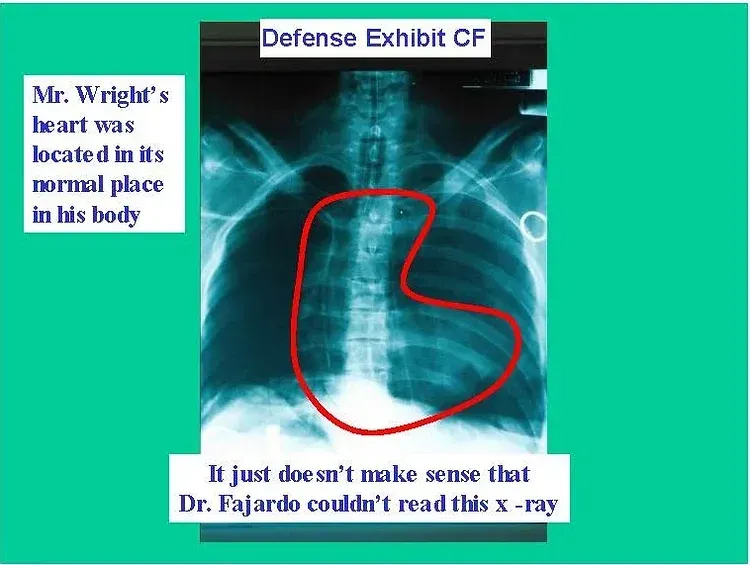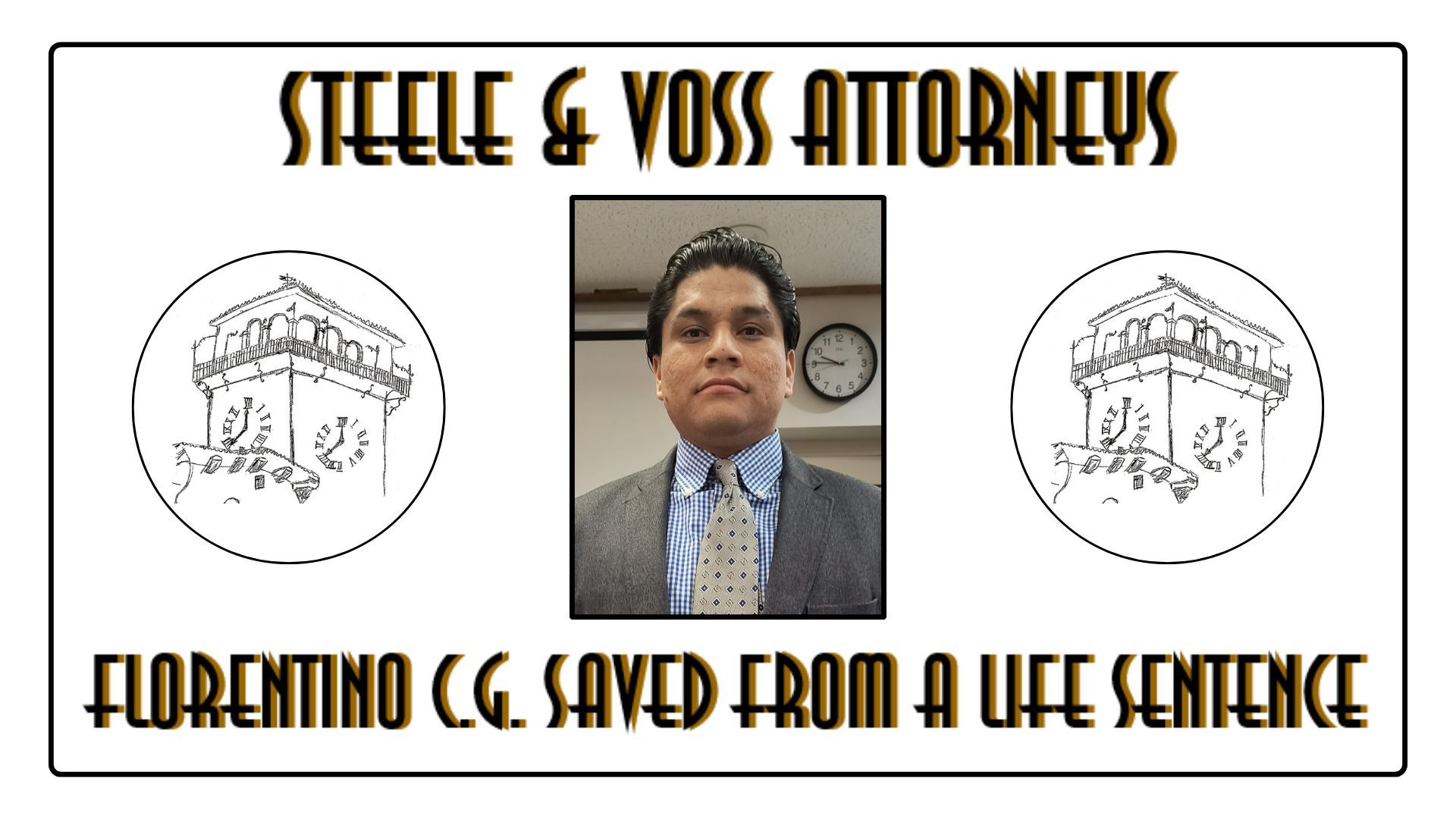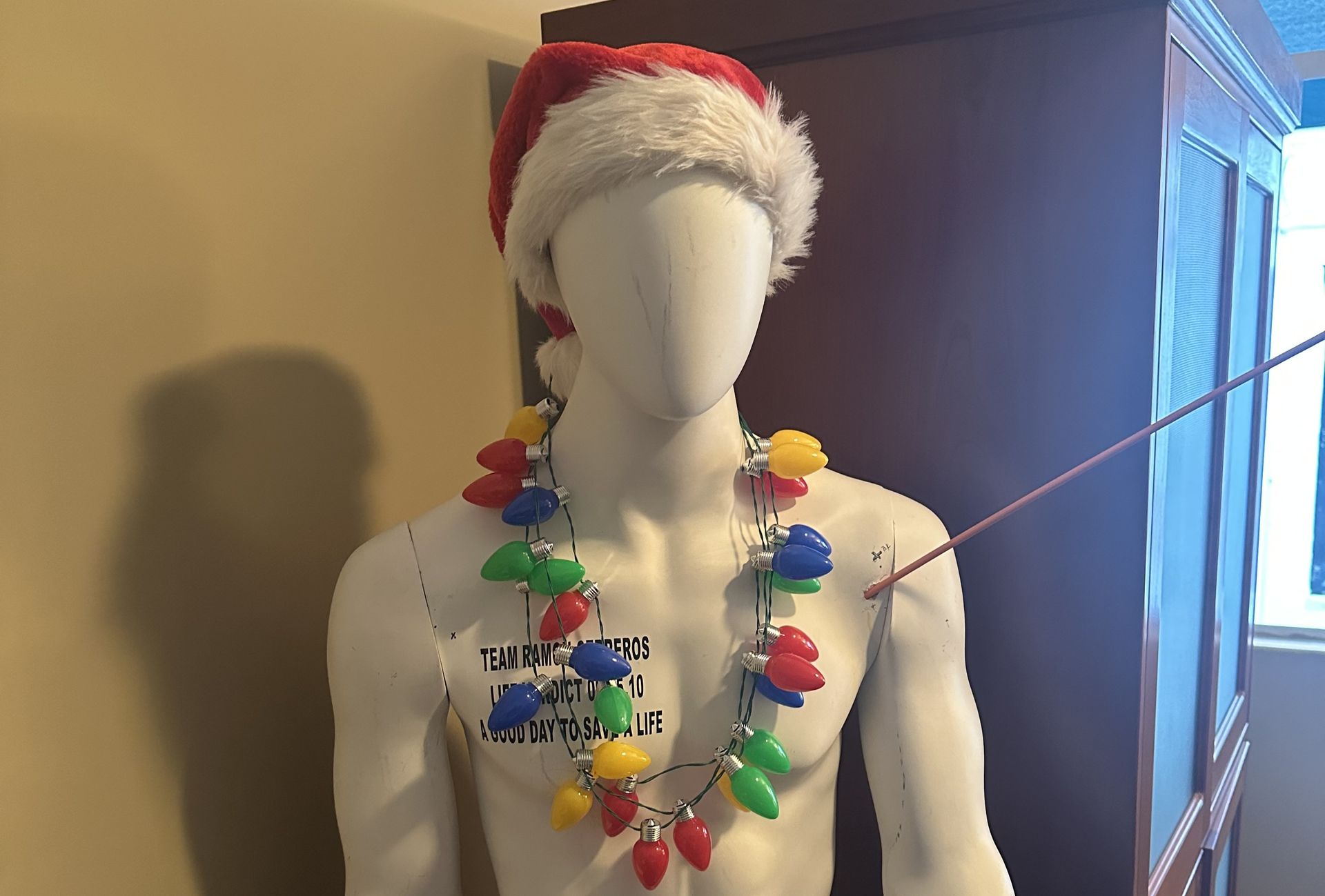Robert M., RIF135704, on February 19, 2010 Acquitted of first degree murder and a hung jury on second degree murder
This is a murder Trial that Addison won
It was a "special circumstance Murder"
So Addison first had to meet with the d.A. Death Penalty Committee and convince them not to seek death
Then at trial his client was acquitted of first degree murder
That meant the he could not be given Life in prison
without the possibility of parole
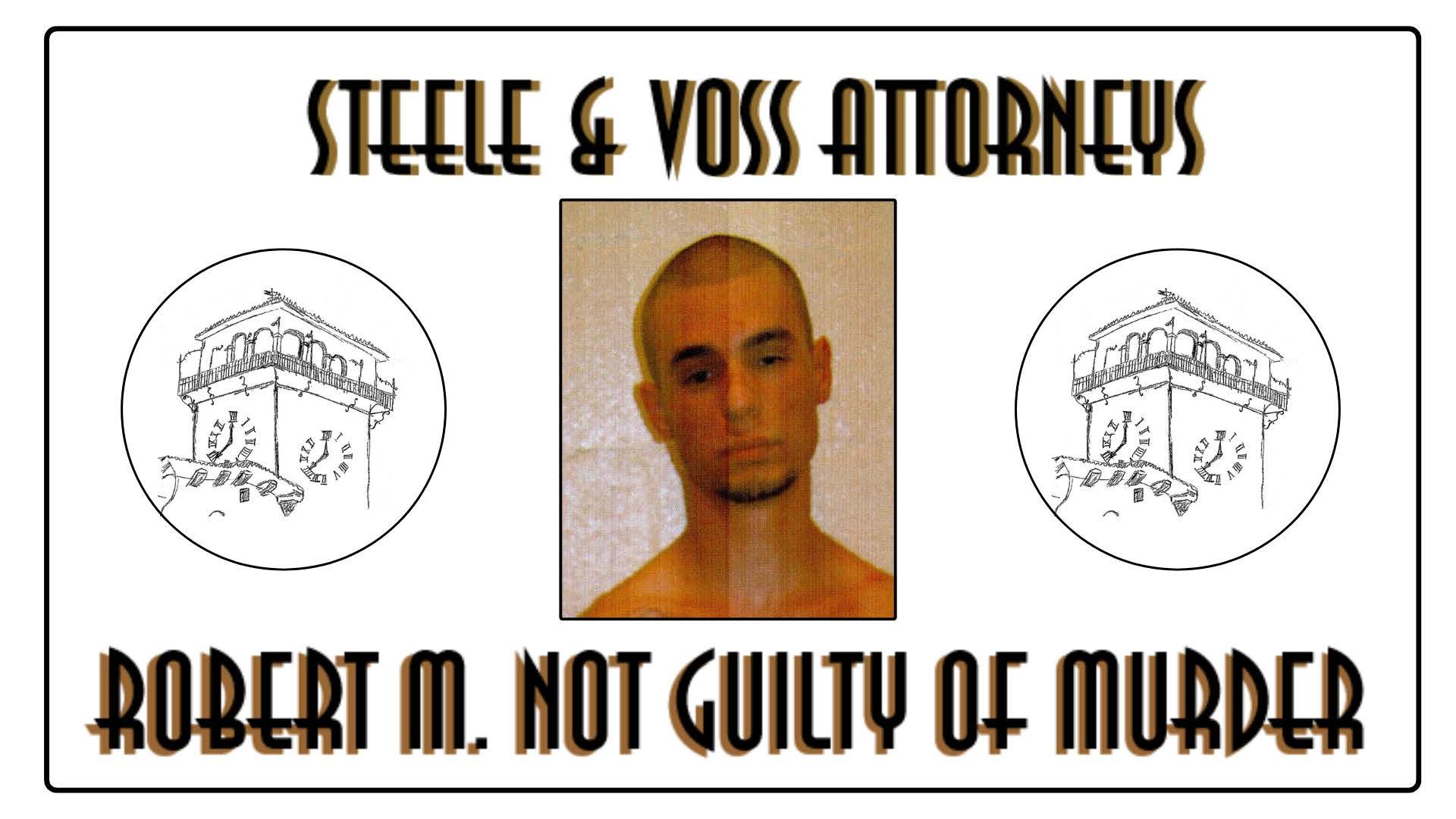
- Charges: Murder (Penal Code § 187(a)) with a special circumstance of gang murder (Penal Code § 190.2(a)(22)) with personal use of a weapon (a knife) (Penal Code § 12022(b)(1)), assault with a knife (Penal Code § 245(a)(1)) and gang crime (Penal Code § 186.22(a)).
- Exposure: Robert was facing life in prison without the possibility of parole (LWOPP).
- Outcome: Robert was acquitted of first-degree murder, which meant that he could not be subjected to the special circumstance and could not get LWOPP. The jury hung on second-degree murder and hung on the gang crime allegation ten to two in favor of acquittal. A different attorney did his second trial, and he was convicted of second-degree murder and gang crime.
At the beginning of the case nineteen year-old Robert Martin was charged with the murder of a white supremacist, with a gang special circumstance, the gang special circumstance made the case a life in prison without the possibility of parole (LWOPP) case. He also had a gang enhancement, which added ten years to his exposure, an assault on the white supremacist's buddy and a substantive gang charge (a gang activity charge).
The defense started with a presentation at the D.A. staffing, the people who would decide if they were going to seek the death penalty, to convince the D.A.'s office not to seek death in the case. That resulted in the D.A. filing a notice that they would NOT be seeking death. The incident occurred in a crowded upscale sushi bar in Corona, California that would convert into a nightclub late at night. There were numerous witnesses that testified. The case was complex in that there was faulty handling of the DNA evidence, the gang expert made up his testimony, there was an intoxication defense and a forensic pathology expert was called to counter the coroner's inaccurate testimony.
The defense was that a "friend" of Robert's, Richard Casiano, was in fact the stabber, not Robert, that the stabbing weapon was in fact a broken beer bottle, not Robert's pocket knife that did not have any of the decedent's blood or DNA on it, and that Robert had done nothing more than get beat up by the decedent. A Penal Code section 1118.1 motion to dismiss the assault charge was granted. After a four month trial, Robert was acquitted of first degree murder. The jury hung on second degree murder and the substantive gang charge (ten to two for not guilty on both charges). Robert went from facing the death penalty to beating LWOPP with an acquittal and beating 25 years to life in prison with the acquittal.
There were 200 people in the sushi restaurant at the time of the incident and Addison's investigator found a good portion of them and got them interviewed, subpoenaed, and to court. Addison also hired and presented a pathology expert, DNA expert, gang expert and intoxication expert. What was left was second degree murder and a ten year gang enhancement.
Addison was moved into a different assignment, exclusively defense of capital murders, so the case was reassigned. Because they couldn't have Addison do the retrial, his family hired a different lawyer. Where Addison had fought for four months battling every aspect of the case, the hired lawyer put on a two week trial and went from Addison's ten to two for not guilty to a conviction for second degree murder and a true finding on the gang allegation. The judge struck the ten extra years for the gang enhancement and Robert was sentenced to fifteen years to life in prison.
At the time murder cases were so common in Riverside County that this case, despite being from an incident in an upscale sushi restaurant in Corona, California, being a death penalty eligible case, and then having a five month long jury trial trial with an acquittal on first degree murder, it got no press coverage whatsoever. Below is a press release that we made after the case was long over.
These are a couple of the closing argument slides that Addison used.
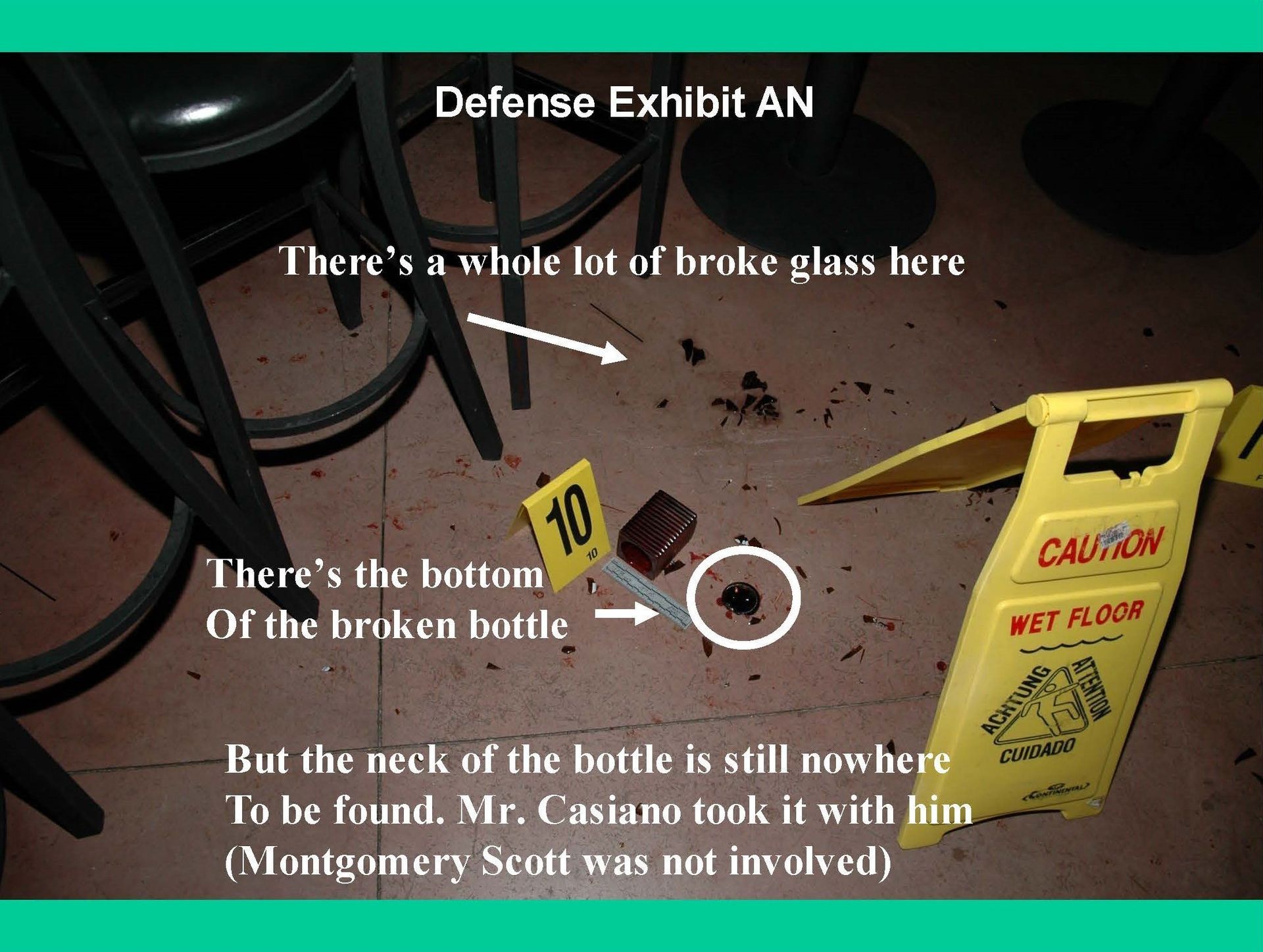
Part of Addison's argument was that there was no large piece of broken bottle for Robert to have used to stab the decedent. He emphasis was that Scotty didn't beam up the key piece of evidence. Scotty, the Star Trek character, is the basis of the pop culture phrase, "Beam me up Scotty." In Star Trek Scotty is Lt. Commander Montgomery Scott.
Below is another slide that Addison used in his closing.
The same County Coroner, a medical doctor, that lied about his handling of the evidence, also testified that he could not read the decedent's x-ray, that he could not see the decedent's heart in the x-ray. The forensic pathologist that Addison hired to testify for the defense said that the decedent's heart was clearly visible in the x-ray and that any medical doctor should be able to easily read the x-ray.
